Deciding I wanted a lifestyle change late in life, I caught the off-grid living bug. Did I want to be self-sufficient? Well, I do not think I asked myself that question at the time.
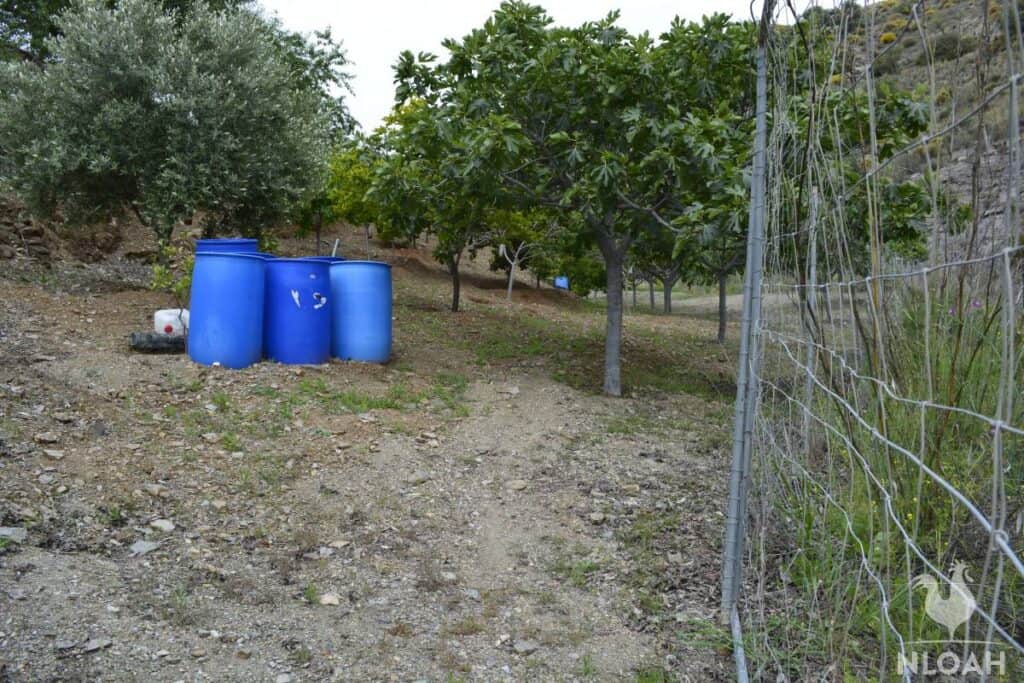
But I asked myself other, more practical ones, such as how much land do you need to be self-sufficient?
For each person in a family, as little as two acres, and as much as 17 acres is enough for a self-sufficient lifestyle. The exact amount depends on what is going to be grown, if animals are going to be kept, the terrain, and the climate.
These numbers are good if you’re just looking for a general rule of thumb, however, I have seen others quoting numbers as low as half an acre, or as high as 50 acres per person. With many figures like these being cited, how can you figure out how much land is needed to be self-sufficient?
There are all kinds of factors that influence this, from where you live to what you plan on doing on your homestead. Plus, everyone has a different understanding of self-sufficiency.
The problem is again compounded by the fact that the amount of land required depends on the activities that you want to undertake on the land and its location.
Consider things such as:
- ✅ Family size
- ✅ Diet and lifestyle
- ✅ Quantities of vegetables, crops, and fruit to be produced
- ✅ Rearing animals
- ✅ Location
- ✅ Slope
- ✅ Altitude
- ✅ Essential buildings and annexes
- ✅ The quality and type of soil
- ✅ Level of rainfall
- ✅ Levels of sunlight
- ✅ Wood for fuel and construction
Plus, the United States has a landmass of 24.71 million square kilometers (9,540,000 square miles), that span 6 climatic regions. It stands to reason that the growing conditions in these different areas will affect the amount of food that can be grown, and therefore how much land is needed.
What Do We Mean By Self-Sufficiency?
Before we dive into land requirements, first it’s important to understand what a self-sufficient lifestyle is. The definition of this lifestyle is that all, and I mean all, our requirements are made or grown on our land. We should not be using any external resources to survive.
We could say that our ancestors were truly self-sufficient – they hunted for meat and grew the food that kept them alive. They made everything they needed from what was available.
Although it is good to get back to basics and live a simple life, I am not sure that many of us truly want a truly self-sufficient lifestyle. Things would be just too difficult for the vast majority of us to handle…
Do we want to make all our clothes, tools, and equipment? Do we no longer want to be able to use our car, or any of the many power tools and kitchen equipment that many of us use daily?
Can we dispose of the many innovations that technological advances can offer? Do we even want to?
Even the early pioneers could not be considered truly self-sufficient. They still went to stores to buy many of their provisions.
Let’s not forget that certain things like running water or the power grid, can help us live a more comfortable life. It’s up to you to decide how much self-sufficiency you ultimately want.
This doesn’t mean that it is impossible to be self-sufficient, or at least get close to this lifestyle.
If we grow surplus fruits and veggies and raise surplus animals, we can sell them to buy the things we cannot make or grow.
By doing this, we could at least be said we’re almost self-sufficient since we would be living from what is being produced on our land. There is nothing wrong with doing a little trading or bartering.
How Many People Are to Be Supported?
The number of people that are to be supported by the land is the first thing to consider. Agricultural experts suggest that, for each person in a family unit, between two and 17 acres of land is needed.
From this, we can assume that two people will require between four and 34 acres. That sounds obvious, really, since a loaf of bread might last one person four days, however, four people will eat it within a day.
The number of people in a family unit is also important since self-sufficiency is hard work. While young children can help with simple chores, there’s plenty of heavy work involved in maintaining a homestead that requires input from capable adults.
I don’t wish to appear ageist in any way, however, some people, when they become older, are not always fit and able to undertake the tasks that a younger person would.
There is a certain age at which homesteading becomes more challenging and those who are very young or very old may have more trouble being up to the tasks required.
Consequently, the age and capabilities of the people in the family unit become of prime importance in finding the amount of land that’s needed.
100 acres of land should be enough to do everything that is needed, but if there is only one person to work that land, then it becomes impossible. There’s just too much work for one person to do.
Vegetable and Crop Production
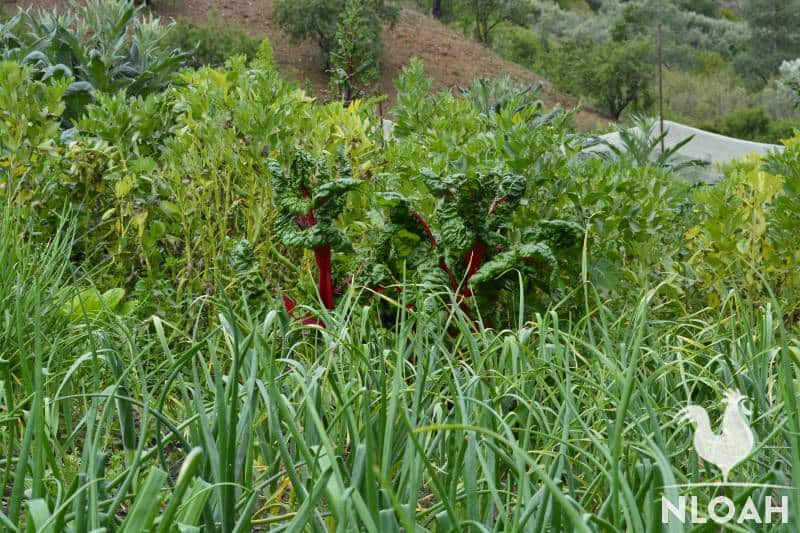
One of the most important activities for self-sufficiency is crop production. There are several methods of cultivation that can also affect how much land is needed.
The most common type of veggies will supply the following approximate yields per acre:
| Potatoes | 24,000 pounds |
| Carrots | 26,000 pounds |
| Peas | 6,000 pounds |
| Onions | 40,000 pounds |
| Lettuce | 29,000 pounds |
Hydroponics and Aquaponics
Hydroponics is a technique that allows plants to be grown in water and so cuts out many of the problems that occur when using a soil-based medium.
Aquaponics is like hydroponics, however, essential nutrients required by the plants are provided by keeping certain fish in the water where the plants are growing.
Experts suggest that close to 90% of an average family’s needs can be grown in an area no larger than 50 square meters with the introduction of hydroponic or aquaponic techniques.
Permaculture
Permaculture is a gardening concept that supplies a holistic approach to growing plants and to life,. This philosophy works by asking us to appreciate, understand, protect, and use the natural processes of the earth.
As an agricultural model, it has the potential to significantly reduce the amount of land to be needed to be self-sufficient.
Experts in this field suggest that as little as a ¼ acre of land could be all that is needed to grow enough produce for each person.
Raised Beds
Using raised beds to grow vegetables can also reduce the amount of land required. Zoned areas allow a more efficient control of conditions. In this way, it is possible to personalize the environment to make it compatible with different plants.
Vegetables will be needed for the whole year despite their growth being seasonal. This makes it necessary to calculate the quantities you need, and plan for this quantity in the growing season.
For example, if 600 pounds (0.27 tons) of potatoes are needed for the full year, these will need to be grown within the season. With this figure, it is possible to calculate how much land is required to grow that amount.
This calculation will be necessary for each product that is needed. Constant land use can damage its structure and nutrients, making it necessary to incorporate extra land to allow time for it to recover.
19,000 sq. feet for vegetables, 3,000 sq. feet for wheat, and 1,000 sq. feet for corn could be considered a good starting figure to cultivate enough food per person.
Orchard Cultivation and Fruit Growing
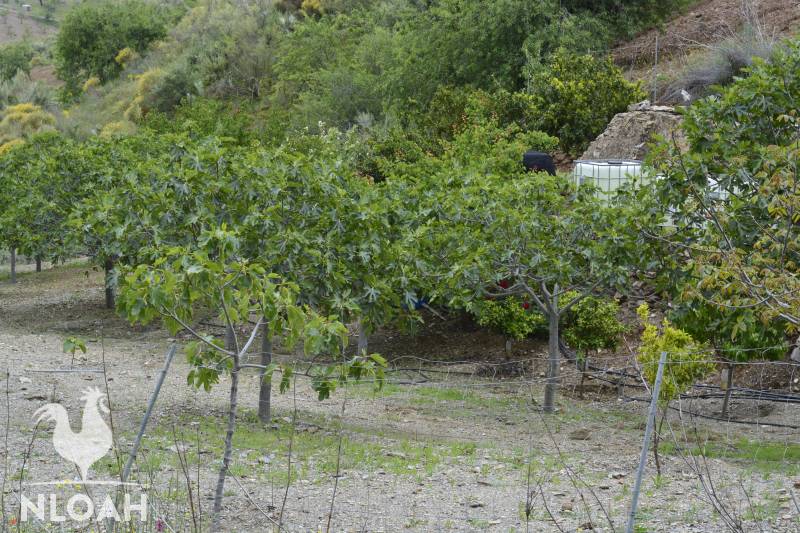
Growing many fruit varieties will help to expand the harvest quantities and the length of the season.
A root cellar will make it easy to store many hard fruits so that they can be enjoyed over a longer period.
Soft fruits will not survive in storage unless they are canned or dried or used to make jams, jellies, or pickles.
It’s a good idea to try to calculate how much fruit is needed. Supplying too much land for an orchard could result in harvests that are far too large to be able to use.
However, if the intention is to grow fruit as a cash crop, then go large.
100 square feet (9.29 m²) would be a good size to set up an orchard of mixed trees. The addition of 20 square feet (1.86 square meters) would supply space for soft fruits.
Animal Rearing and Husbandry
Protein is an important macronutrient to keep fit and healthy, and it is particularly important if daily physical work is being done.
Different animals require looking after in different ways, and have different land requirements. The amount of land will also change according to how many are to be kept.
Chickens are popular since they supply meat and eggs. They do not require too much space. A single free-range chicken can live happily in a space of approximately 15 sq feet (1.39 square meters).
Goats are also popular since they supply meat and milk that can be used to make cheese and other items such as soap. Each goat will require approximately 30 to 50 sq feet (4.65 square meters) of land to supply adequate grazing.
Cattle are vital due to the large quantities of meat that they will provide. They will also produce large quantities of milk that can be used to produce butter, cheese, and yogurt.
Their products are also a valuable cash crop. A good estimate for land required to keep an individual cow would be two acres.
Sheep can again supply meat and wool for their use or selling. An average figure for land required to keep two sheep would be one acre. This does, however, change if the land doesn’t supply the good grazing requirements that they require.
Extra land may need to be given for growing crops for animal feed and pastureland to allow animals to graze.
Diet and Lifestyle
Other important factors that have a direct relationship with the land requirement are diet and lifestyle.
Those who are happy with a simple existence, and have little need for the luxuries that modern-day life offers, will demand less, and therefore need to produce less.
Many folks today also don’t agree with eating livestock. Those who follow a vegetarian or vegan diet will only be concerned with growing fruits and veggies, so they won’t need any extra land for raising livestock.
Wood for Fuel and Construction
Wood is an essential commodity that, if not sourced from your own land, will otherwise have to be purchased. It’s also necessary for most construction on the homestead.
No matter what activities are to be undertaken to become self-sufficient, a good supply of wood is going to be essential. Almost all construction, whether it be a house, a chicken pen, or fence posts, will require wood.
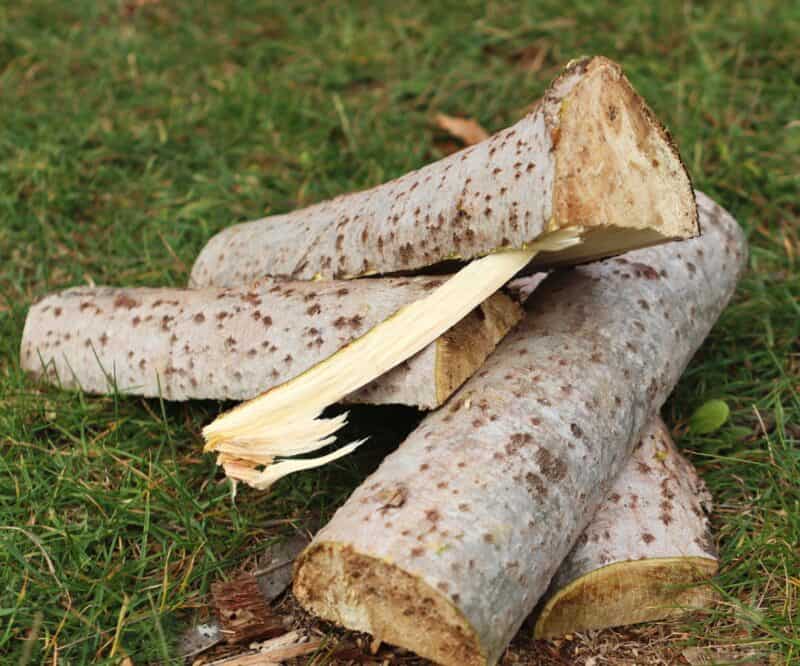
Wood is also an essential fuel supply. A self-sufficient lifestyle will almost certainly not use the power grid as the main source of energy. Consequently, wood will be the main fuel for heating and probably most of the cooking.
A wooded area of at least five acres should supply enough resources for a family.
This sounds like a large area; however, it is important to remember that as the wood is used new trees need to be added to ensure that a consistent supply is available in years to come.
Not having a wooded area is a possibility to reduce the amount of land needed, and dramatically reduce the work input. However, this would mean that wood will need to be brought in. Not a problem if you can fund it from sales or trades of other products.
Other Essential Land Use
When discussing land usage requirements for self-sufficiency, growing crops and rearing animals are the obvious uses that we should consider. However, land is also needed for other purposes.
Housing Requirements
A house is an obvious requirement, as its size will involve a little bit of math. Kitchens, bathrooms, and bedrooms are all needed, but how many and the sizes will affect the amount of land required.
Space will also be needed for solar panel arrays, septic tanks, and tanks for rainwater harvesting so a little extra land is always beneficial.
Root Cellars
We have seen that growing enough produce during the growing season is necessary to harvest enough for the rest of the year. With all this produce, it’s important to be able to store it for future use.
A root cellar will be the typical go-to solution for most folks. This will need to be a reasonable size, as a few sacks of potatoes will take a considerable amount of space on their own.
Shelves will help to reduce the footprint of a root cellar. However, it still needs to be large enough for you to enter and move around comfortably.
A cellar space of 8 ft (2.44 meters) square should be adequate to hold sufficient supplies for a family of four.
Barns and Workshops
A barn is an essential facility to care for animals. In areas with harsh winters, it can supply vital shelter. There are also times when certain animals during the breeding season should be isolated and protected.
A barn or workshop will also supply a valuable workspace. Living a self-sufficient lifestyle requires a great deal of make, do, and mend. To call tradesmen in to repair things around the homestead will typically be a last resort.
Repairing, manufacturing, and up-cycling takes a significant space. This space is best to be separate from the living area.
Since a barn and workshop will be a hub for many activities it will need to be of a reasonable size, so 3 0ft (9.14 m) x 40ft (12.19 m) should give you enough space.
Greenhouses or Polytunnels
An important asset for anyone trying to maximize food production is a greenhouse.
This facility will allow the growing cycle of food to be extended beyond the normal season. It also allows greater control of the environment and pests – to be able to produce more.
How much space is needed for a greenhouse or polytunnel? I would suggest that the minimum would be 200 sq. feet. As a starting point.
Even this size would produce substantial benefits for food production. However, providing an area several times larger will help to enable future additions. In some cases, plastic polytunnels can even be used to house animals like chickens, sheep, or pigs during the winter.
Terrain
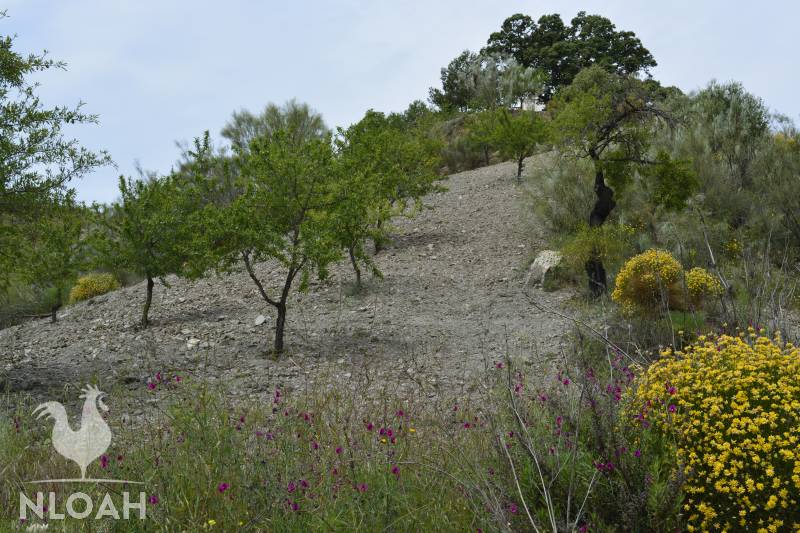
In an ideal world, the land would all be flat and usable… but that’s not always the case:
- Places where the land is mountainous may have areas that do not have any topsoil.
- Some land may be too steep to be productive.
- Some areas are prone to repeated flooding, making them impossible to use for most things.
Quality and Type of the Soil
The quality and type of soil vary not only in different areas of the United States but also within individual parcels. A field can have several types of soil. There is good soil and bad soil. Fortunately, all kinds of soil can be amended and improved upon.
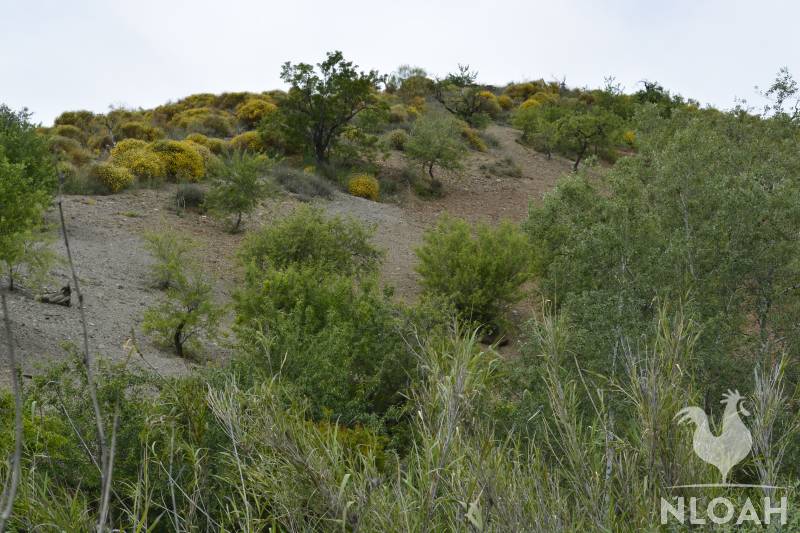
The quality and type of soil affect how much land is needed since it has a direct relationship to how productive land is.
Land that is of good quality will allow a smaller plot of land to grow the number of crops required.
Some areas of land have been contaminated or stripped of their nutrients over some time. This land will produce nothing unless it is repaired and fed.
Rainfall
Water is a vital resource for all crops. The amount rainfall in a particular area can be enough to produce high yields, or it may be so high that it restricts them.
Plants in areas of high rainfall will struggle to set up a good root structure. A poor root structure will at best lead to a poor crop and at worst kill the plants. Areas that do not have enough rainfall are not quite so problematic since they can be irrigated provided the resources are available.
The difference in rainfall can affect the amount of land required by approximately 50%.
Sunlight
Water is one major factor that affects plant growth. The other equally important requirement is the amount of sun that shines on the crops. Consequently, this also has a direct effect on how much land is needed.
With six climatic zones, the difference in amounts of sunlight varies dramatically.
Another feature that affects the amount of sun is the terrain. Mountainous areas have land that faces in different directions. Southern-facing slopes are exposed to the more direct sun than those that face the north.
South-facing land is generally more productive than land that faces the north. Consequently, less south-facing land will be required.
Summary
How much land are we talking about to make a self-sufficiency dream possible?
Agricultural experts suggest that the land required by a family of four will be between 17 and 30 acres depending on the balance between the amount of food grown and the number of animals kept for food.
However, the amount of land required to be self-sufficient does not have a specific answer. It depends on your lifestyle requirements and, as we’ve shown, how productive the land is.
Some people may be tempted to buy a small area to add more later. This does not always work, since the parcel of land adjacent to yours that is available now may not be available tomorrow.
It’s also not a good idea to buy a huge plot of land, since it may supply too much to be able to work on.
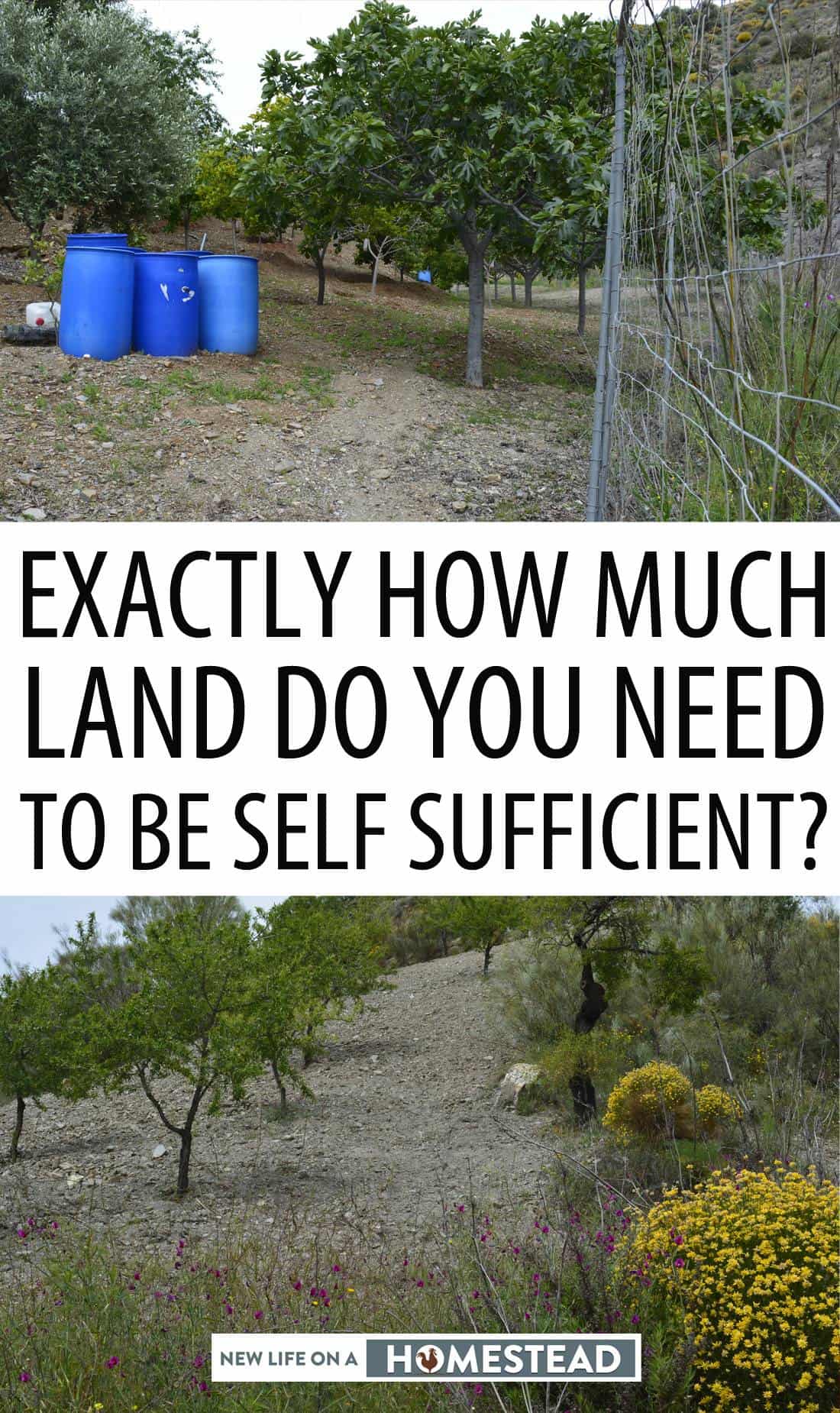

Gordon is a British homesteader established in Spain, growing large amounts of veggies and fruits. He also has a high degree of self-sufficiency as he is procuring his own water, wood, and solar energy.

“ Experts suggest that close to 90% of an average family’s needs can be grown in an area no larger than 50 square meters with the introduction of hydroponic or aquaponic techniques.”
If half of daily calories come from carbs like grain and sugar, and another 25% from oils, how does one achieve 90% from 50 sm?